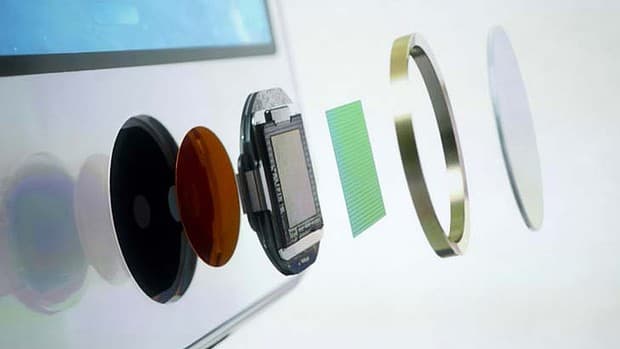iPhone 5S TouchID fingerprint scanner hacked with a simple trick
Apparently, it didn't take much of technical wizardry to hack the Apple iPhone 5S biometric fingerprint scanner. German group of hackers that goes by the name 'Chaos Computer Club' aka CCC posted a video on Youtube (see below) showing how easy it is to break the security offered by the fingerprint scanner. All it took to fool the scanner was a fingerprint of the owner photographed from a glass surface. The group posted their achievement on the blog (source link below) and claimed that biometrics isn't suitable as access control mechanism.

Frank Rieger, the author of the post & spokesperson of CCC says that Apple's fingerprint scanner doesn't offer any security enhancements over its rivals. It's just a scanner with higher resolution than the existing ones. The hackers took a photograph of the authenticated user at about 2400 dpi. The photograph was then cleaned up and the printed on a transparent sheet using thick toner settings at 1200 dpi. Finally, pink latex milk or white wood-glue was smeared into the pattern created by the toner on the sheet. The sheet was then breathed on to make it a bit moist; to mimic the real finger and was placed on the sensor area. The sensor couldn't figure out the difference between the real owner and the hacker.
Frank further says that it's stupid to use something you can never change and leave everywhere everyday as a security token and says that the biometric technology designed for oppression and control and not for security. He appealed to iPhone 5S users to avoid protecting their sensitive data using biometric fingerprints only.
See all of iPhone 5S hacking in the video below and post your comments.
Source: <a href="https://www.ccc.de/en/updates/2013/ccc-breaks-apple-touchid" target="_blank" rel="noopener noreferrer">CCC | Chaos Computer Club breaks Apple TouchID</a>

Frank Rieger, the author of the post & spokesperson of CCC says that Apple's fingerprint scanner doesn't offer any security enhancements over its rivals. It's just a scanner with higher resolution than the existing ones. The hackers took a photograph of the authenticated user at about 2400 dpi. The photograph was then cleaned up and the printed on a transparent sheet using thick toner settings at 1200 dpi. Finally, pink latex milk or white wood-glue was smeared into the pattern created by the toner on the sheet. The sheet was then breathed on to make it a bit moist; to mimic the real finger and was placed on the sensor area. The sensor couldn't figure out the difference between the real owner and the hacker.
Frank further says that it's stupid to use something you can never change and leave everywhere everyday as a security token and says that the biometric technology designed for oppression and control and not for security. He appealed to iPhone 5S users to avoid protecting their sensitive data using biometric fingerprints only.
See all of iPhone 5S hacking in the video below and post your comments.
0
